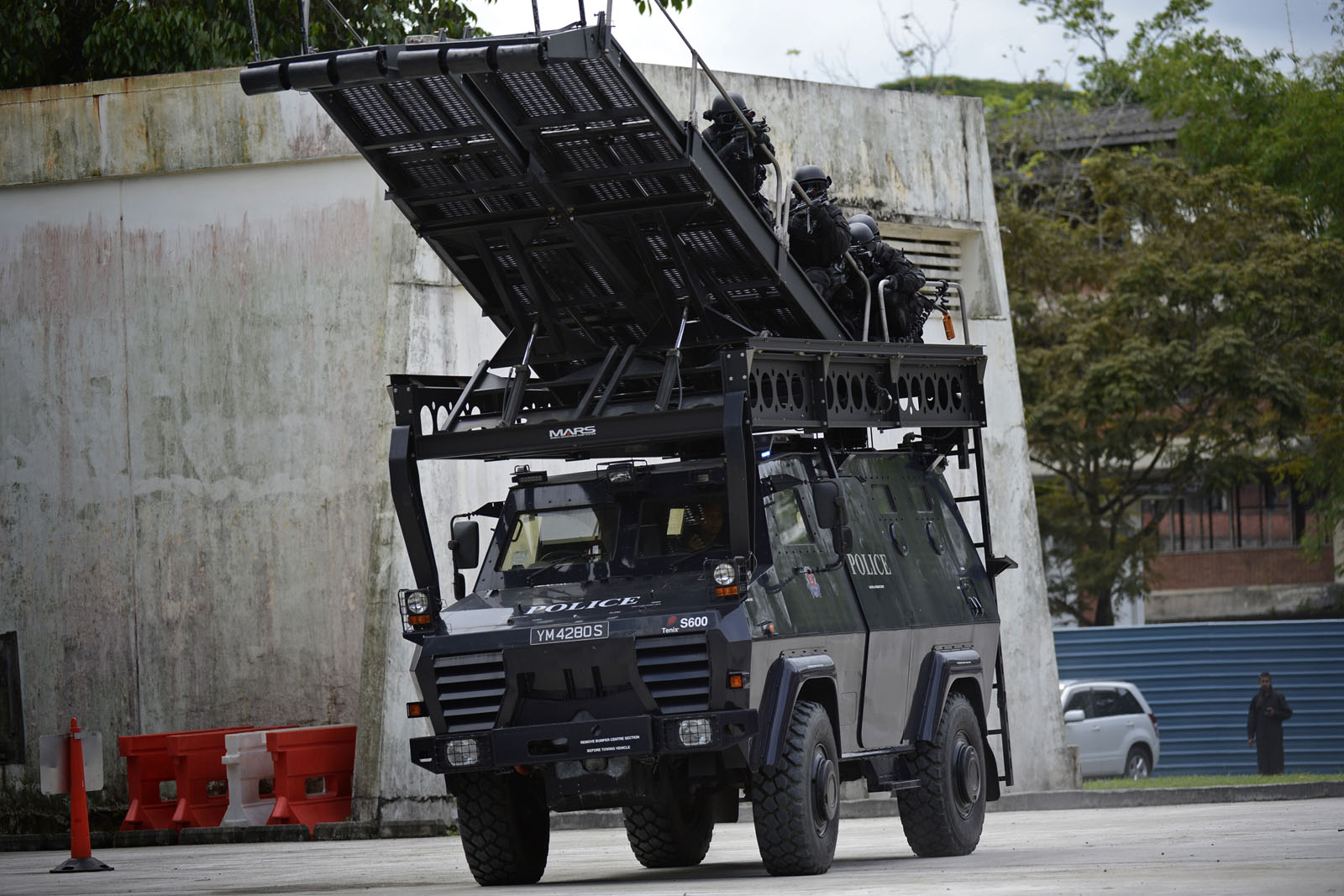These are pictures of a major elite Hostage Rescue Team in Asia in training for Close Quarter Battle and Maritime Counter Terrorism.
We have also reviewed the film Zero Dark Thirty and we do think the film's producers should have hired us to ensure the actor's combat movments were professional.
For one thing, the Team Leader does not yell out for the Breacher (EOD guy) to move forward to plant explosive charges onto the door and exdecute. Hand Signals by the Team Leader will do. Quiet. Silence please.
Also, combat movements for assaulters was messy and haphazard.
By SARAH KENT And NEENA RAI
Piracy off the coast of East Africa has fallen dramatically over the past year thanks in part to better naval surveillance and shipping companies going to sea with armed maritime security contractors. The British government now is trying to persuade Sri Lanka not to upset the new status quo.
Sri Lanka has been a hub for private-security firms in the region because it allows them to carry weapons in and out of the country. But Sri Lanka wants to close these arms warehouses, fearing that weapons might fall into the hands of local militants.
Other countries have taken a stricter view on private firms bringing arms into their ports. With Sri Lanka now also thinking of closing its doors to weapons caches for security firms, shipping experts worry that shipboard security could be jeopardized.
"While the international shipping community objects to these proposed changes, the Sri Lankan government is extremely unlikely to back down on this decision," said Arvind Ramakrishnan, principal Asia analyst at consultancy Maplecroft.
U.K. firms account for more than half of the 24 companies currently participating in the Security Association for the Maritime Industry's certification program, an industry standard that has gained traction in the absence of an international benchmark of quality for private maritime security firms. Most of their ranks are filled by former members of the British military, according to Stuart Niven, operations manager at Britannia Maritime Security.
Sri Lanka's decision raises a difficult legal question for U.K.-based maritime security firms, because arms licenses issued by the U.K. government don't authorize the use of offshore floating armories. Finding reputable alternatives to U.K.-based firms may prove difficult for shipowners, as British companies are so numerous within the industry.
"FCO ministers and senior officials have lobbied the Sri Lankan authorities to delay the implementation of the move to the floating armory to allow Her Majesty's Government to conduct a full assessment and licence U.K. companies appropriately," a spokesman for the U.K. Foreign and Commonwealth Office said. "We have not yet had a response."
The Sri Lankan Ministry of Defence declined to comment.
Floating armories proliferated even before the Sri Lankan decision. Because some countries bordering the piracy hot spots around Somalia impose severe restrictions on the transit of arms through their ports, these flotillas fill a logistical niche. They allow security operatives to board at the same port where a vessel takes on cargo or refuels and then pick up their arms en route through the Gulf of Aden, between Yemen and Somalia, rather than forcing the ship to make a detour to a port where arms traffic is allowed.
Security guards have become a common sight on vessels off the coast of Somalia, where the pirate scourge costs the world economy between $7 billion and $12 billion a year, according to International Maritime Bureau estimates.
The IMB estimates that incidents of Somali piracy fell to 69 in the first six months of 2012, compared with 163 in the same period last year.
The Security Association for the Maritime Industry estimates that as many as 80% of the roughly 25,000 vessels deemed vulnerable to attack while transiting the Gulf of Aden each year will carry armed guards in the next year.
"The combination of international naval surveillance and private security contractors, many of them British, has put a dent in the piracy threat in recent months," said Philippe de Pontet, director for Africa at consultancy Eurasia Group. He said any obstacles that make it harder for security firms to operate in the Indian Ocean could elevate the risk to shippers.
Losing U.K. contractors could be a liability, warn shipping experts. "It would certainly create a problem for those quality-conscious ship owners," said Dirk Steffen, director of consultancy at security adviser Risk Intelligence. In order to keep their insurance, many shippers need to ensure the security companies have a certain level of quality, he said.
Security firms must now decide whether to shift operations to other land-based arms stores in the area, which could cost both time and money, or run the risk of serious legal consequences.
"We face a fairly stark choice in facing commercial damage and not going via Sri Lanka, or operating transparently, but outside the bounds of our license," said Tom Brind, senior operations manager at security company Solace Global Maritime.











